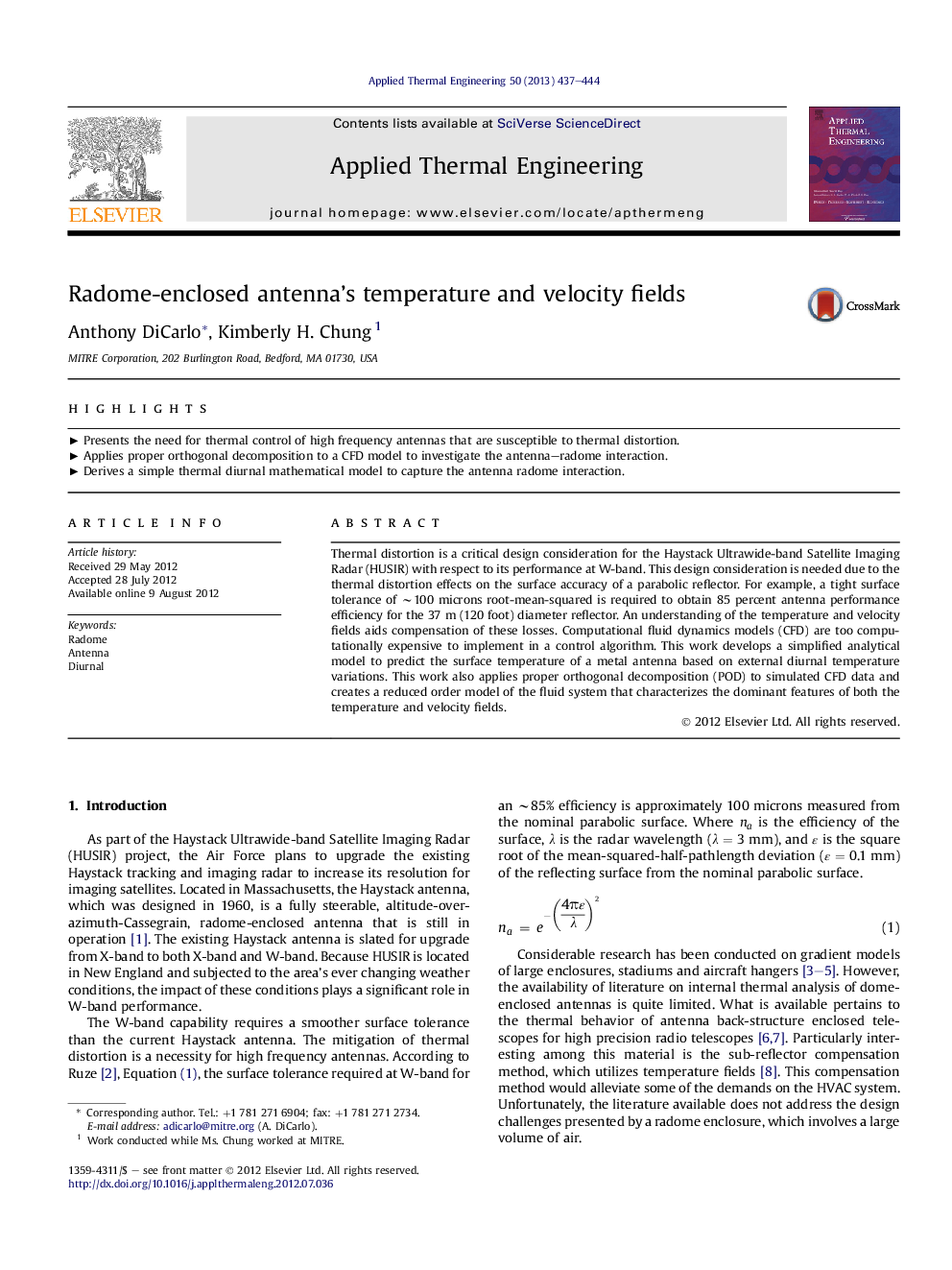| Article ID | Journal | Published Year | Pages | File Type |
|---|---|---|---|---|
| 647260 | Applied Thermal Engineering | 2013 | 8 Pages |
Thermal distortion is a critical design consideration for the Haystack Ultrawide-band Satellite Imaging Radar (HUSIR) with respect to its performance at W-band. This design consideration is needed due to the thermal distortion effects on the surface accuracy of a parabolic reflector. For example, a tight surface tolerance of ∼100 microns root-mean-squared is required to obtain 85 percent antenna performance efficiency for the 37 m (120 foot) diameter reflector. An understanding of the temperature and velocity fields aids compensation of these losses. Computational fluid dynamics models (CFD) are too computationally expensive to implement in a control algorithm. This work develops a simplified analytical model to predict the surface temperature of a metal antenna based on external diurnal temperature variations. This work also applies proper orthogonal decomposition (POD) to simulated CFD data and creates a reduced order model of the fluid system that characterizes the dominant features of both the temperature and velocity fields.
► Presents the need for thermal control of high frequency antennas that are susceptible to thermal distortion. ► Applies proper orthogonal decomposition to a CFD model to investigate the antenna–radome interaction. ► Derives a simple thermal diurnal mathematical model to capture the antenna radome interaction.
